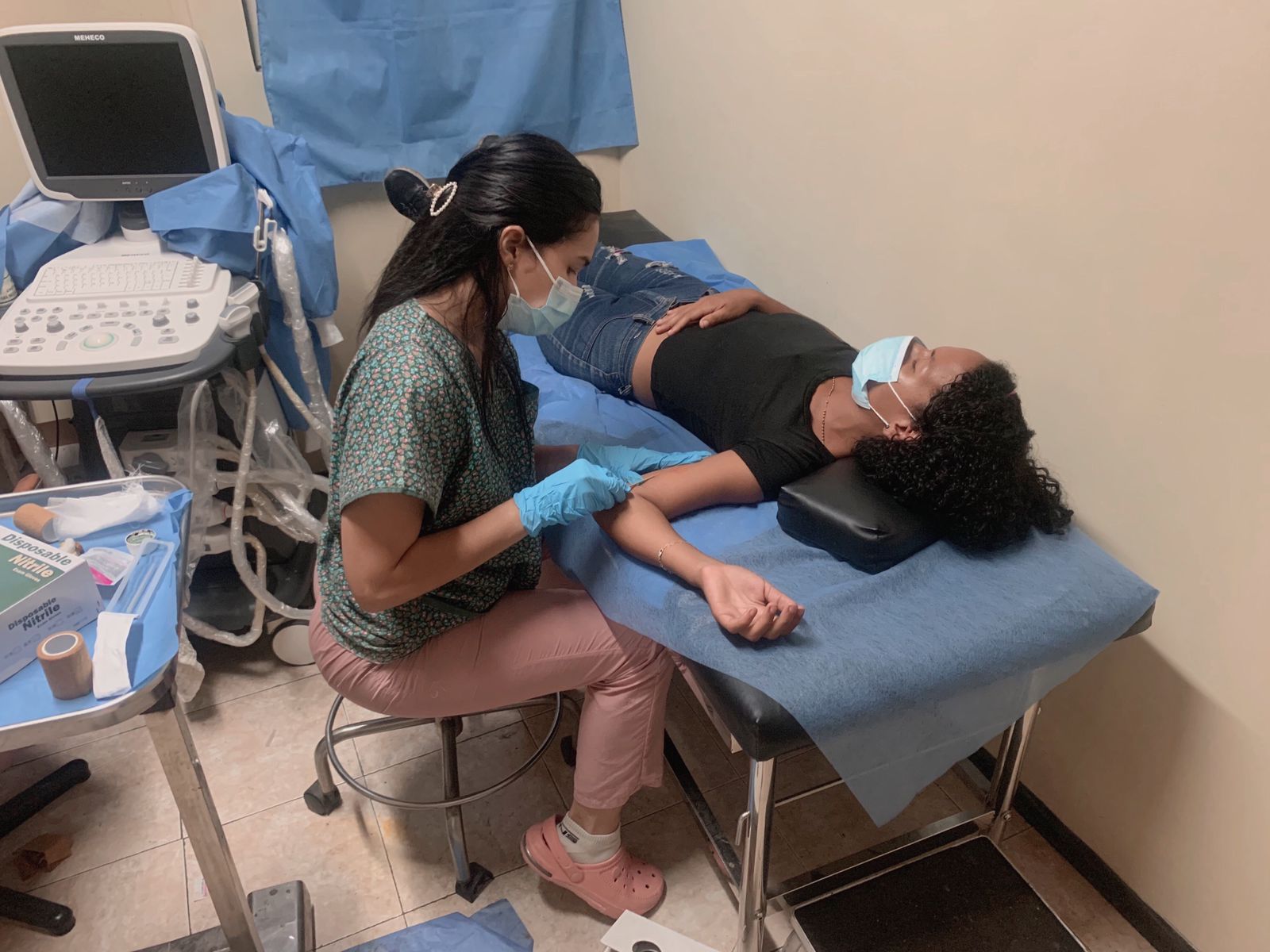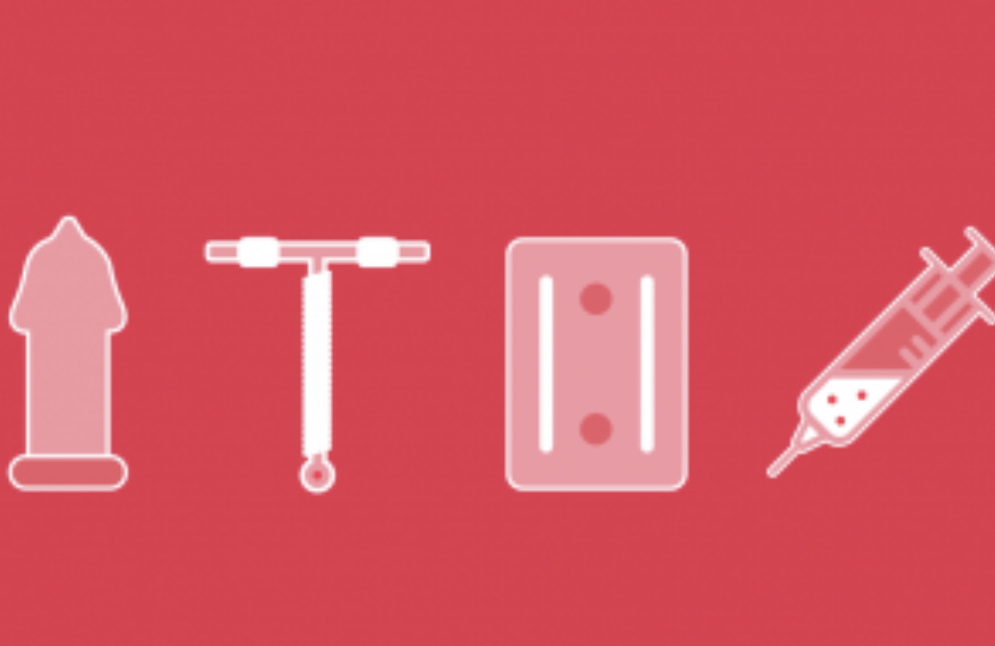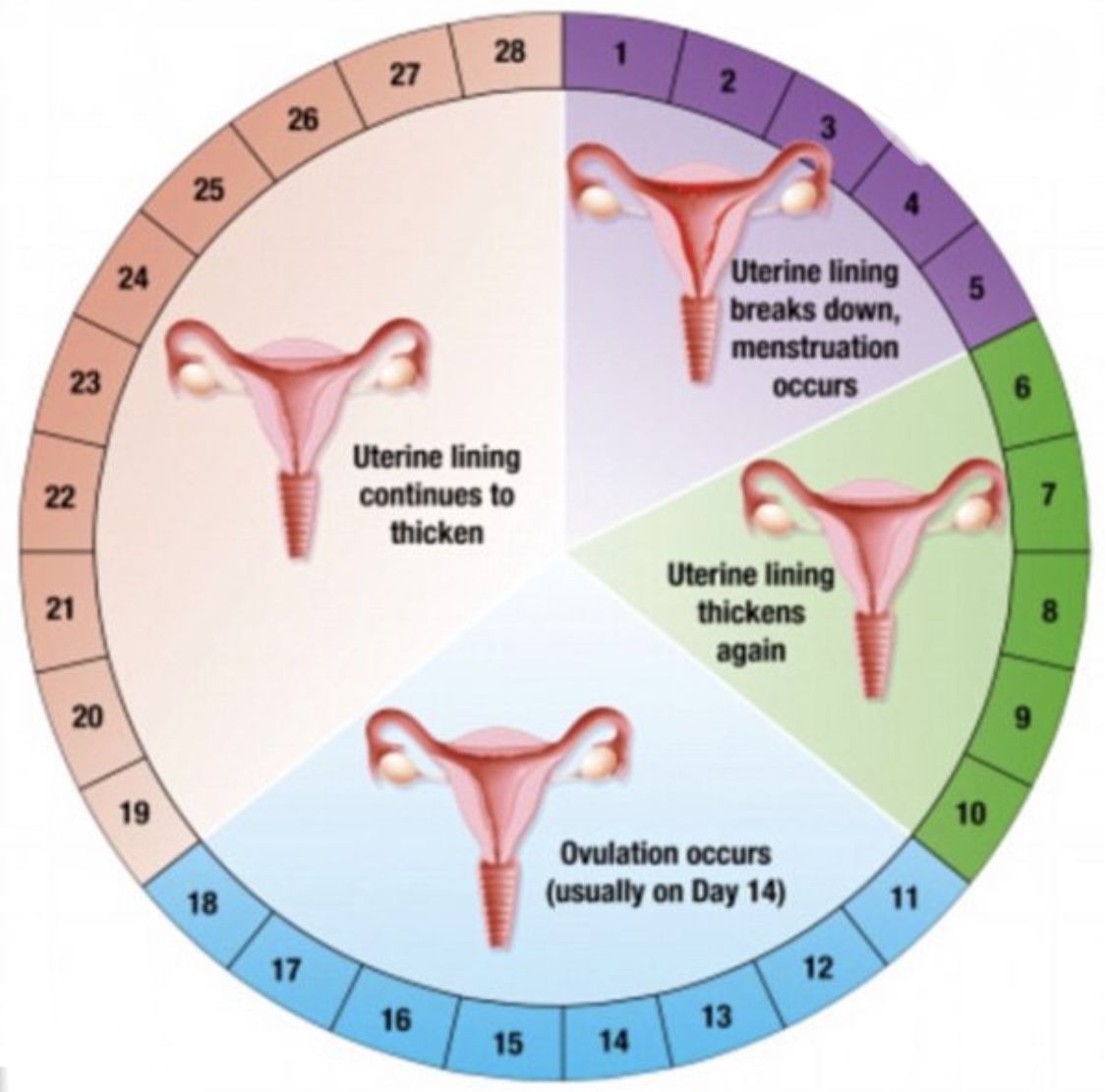Metodos Anticonceptivos:¿ Cuales Son y Como Funcionan?
Contraceptive Methods: What Are They and How Do They Work?
Antes de hablar de los métodos anticonceptivos debemos saber que es el ciclo menstrual, El ciclo menstrual son la serie de cambios que el cuerpo de la mujer experimenta todos los meses en preparación para la posibilidad de un embarazo. Cada mes, uno de los ovarios libera un óvulo en un proceso llamado ovulación. Al mismo tiempo, se producen cambios hormonales que preparan al útero para el embarazo, podemos decir que los días fértiles o donde hay mayor probabilidad de un embarazo son del día 12 al 16 del ciclo menstrual siendo el más fértil el día 14, teniendo en cuenta que esto aplica con mayor seguridad en aquellas mujeres que tienen menstruaciones regulares a lo largo de su vida.
Before talking about contraceptive methods, we must know what the menstrual cycle is,The menstrual cycle is the series of changes that a woman's body undergoes each month in preparation for the possibility of pregnancy. Each month, one of the ovaries releases an egg in a process called ovulation. At the same time, hormonal changes occur that prepare the uterus for pregnancy, we can say that the fertile days or where there is greater likelihood of pregnancy are from day 12 to 16 of the menstrual cycle being the most fertile day 14, taking into account that this applies with greater certainty in those women who have regular menses throughout their lives.
Now, contraceptive methods can be divided into natural, barriers and hormonal methods and here I will explain some of them.
Natural Contraceptive Methods. They are all those that do not involve the use of devices or drugs, I will talk about the most common natural contraceptive method which is the rhythm method.
Método del ritmo:
El método del ritmo consiste en rastrear en que momento del ciclo menstrual se está y tener relaciones sexuales solo los días donde no se está fértil, este es un método fácil de usar ya que no requiere de la toma de medicamentos o utilización de dispositivos pero es recomendado solamente en mujeres que tengan un ciclo menstrual regular, ya que en aquellas mujeres en las que el ciclo es irregular no se puede determinar con exactitud los días de ovulación y por eso este método fallaría en esas personas, además es importante saber que este método no es 100% efectivo aun en mujeres regulares existe un margen de error considerable, se estima que es 70% efectivo aproximadamente y además es importante recalcar que no previene ante enfermedades de transmisión sexual.
Rhythm method:
The rhythm method consists of tracking where you are in your menstrual cycle and having sex only on the days where you are not fertile, this is an easy method to use since it does not require taking medication or using devices but it is recommended only in women who have a regular menstrual cycle, It is important to know that this method is not 100% effective even in regular women there is a considerable margin of error, it is estimated to be approximately 70% effective and it is also important to emphasize that it does not prevent sexually transmitted diseases.
Hablemos ahora de los métodos anticonceptivos de tipo Hormonal estos son aquellos que actúan liberando hormonas , habitualmente estrógeno y progestágenos y así impidiendo que se produzca el embarazo ya sea deteniendo la ovulación o aumentando el grosor de la mucosidad en el cuello uterino lo que evita el paso de los espermatozoides y así mismo su unión con el ovulo. Entre estos tenemos:
Las Píldoras anticonceptivas:
Consisten en la toma diaria de una píldora que libera cantidad de hormonas diarias necesarias que impiden la fecundación y en consecuencia impiden el embarazo.
Anillo vaginal:
consiste en un anillo de látex que se introduce en el fondo de la vagina y diariamente libera la cantidad de hormonas necesarias, es fácil y cómodo de usar, se usa uno al mes.
Implante subdermico:
Consiste en dos varillas que se colocan a nivel subdermico (debajo de la piel) en el brazo y que liberan la cantidad de hormonas necesarias para epara producir un ambiente en el que espermatozoides no pueden fecundar el ovulo o directamente evitan la ovulación, tiene una duración de 3 a 5 años por lo que resulta un método cómodo de utilizar ya que no se tiene que estar pendiente de cambiar o renovar el método todos los meses.
INYECCIONES MENSUALES O TRIMESNTRALES:
Consiste en la aplicación de una inyección de un preparado hormonal que como todos los métodos explicados arribas evitan el embarazo, es un método bastante utilizado por su cómoda aplicación
Now let's talk about hormonal contraceptive methods, which are those that act by releasing hormones, usually estrogen and progestogens, thus preventing pregnancy from occurring either by stopping ovulation or by increasing the thickness of the mucus in the cervix, which prevents the passage of sperm and their union with the ovum. Among these we have:
Contraceptive Pills:
They consist of the daily intake of a pill that releases the necessary daily amount of hormones that prevent fertilization and consequently prevent pregnancy.
Vaginal ring:
Consists of a latex ring that is inserted at the bottom of the vagina and daily releases the necessary amount of hormones, it is easy and comfortable to use, one is used per month.
Subdermal implant:
It consists of two rods that are placed at subdermal level (under the skin) in the arm and that release the amount of hormones necessary to produce an environment in which sperm cannot fertilize the egg or directly prevent ovulation. It has a duration of 3 to 5 years, so it is a convenient method to use since it is not necessary to be aware of changing or renewing the method every month.
MONTHLY OR TRIMESTRAL INJECTIONS:
Consists of the application of an injection of a hormonal preparation that like all the methods explained above prevents pregnancy, it is a method widely used for its convenient application.
 Esta es una foto mia colocando un implante subdermico a una paciente./This is a picture of me placing a subdermal implant in a patient
Esta es una foto mia colocando un implante subdermico a una paciente./This is a picture of me placing a subdermal implant in a patient
 Una compañera y yo luego de colocarno el implante subdermico//A colleague and I after the placement of the subdermal implant.
Una compañera y yo luego de colocarno el implante subdermico//A colleague and I after the placement of the subdermal implant.
.jpg)
Aqui una foto de mi brazo luego de la colocacion del implante, una de los efectos adverso mas comun del implante son los moretones
Here is a picture of my arm after implant placement, one of the most common adverse effects of the implant is bruising.
Ahora hablemos de los métodos anticonceptivos de barrera, se denominan de barrera por que actúan como una barrera que impide el paso de los espermatozoides.
Now let's talk about barrier methods of contraception, they are called barrier methods because they act as a barrier that prevents the passage of sperm.
EL PRESERVATIVO (MASCULINO Y FEMENINO)
El condón masculino es un tubo delgado y flexible de látex, poliuretano o intestinos de oveja, que tiene un extremo cerrado este evita el paso de espermatozoides al canal vaginal y por ende evita el embarazo cabe resaltar que es el ÚNICO método que aparte de prevenir el embarazo también previene las enfermedades de transmisión sexual, el único riesgo que existe con este método es la ruptura del mismo.
THE PRESERVATIVE (MALE AND FEMALE)
The male condom is a thin, flexible tube made of latex, polyurethane or sheep intestines, which has a closed end that prevents the passage of sperm into the vaginal canal and thus prevents pregnancy. It should be noted that it is the ONLY method that apart from preventing pregnancy also prevents sexually transmitted diseases, the only risk that exists with this method is its rupture.
T DE COBRE:
E s una estructura de plástico en forma de T que se inserta en el útero. El alambre de cobre enrollado alrededor del dispositivo produce una reacción inflamatoria que es tóxica para los espermatozoides y los óvulos, mediante lo cual se evita el embarazo hasta 10 años posterior a la colocación, es u método muy cómodo y la calidad y precio son bastante buenas pero se recomienda monitorizar mediante consultas con el ginecólogo anualmente.
COPPER IUD:
Is a T-shaped plastic structure that is inserted into the uterus. The copper wire wrapped around the device produces an inflammatory reaction that is toxic to sperm and eggs, which prevents pregnancy up to 10 years after placement, it is a very comfortable method and the quality and price are quite good but it is recommended to monitor through consultations with the gynecologist annually.
Hoy en día tener una vida sexual activa es muy común por eso en el mercado se ofrecen gran variedad de métodos para que se disfrute la sexualidad pero con la responsabilidad que lo amerita, Lo más indicado es que cualquier mujer que empiece una vida sexualmente activa acuda a la consulta ginecológica y de planificación familiar con el médico especialista ya que él, es el único capacitado para evaluarte de forma individualizada y recomendarte el método indicado para ti, que se adapte a tus necesidades, y sobretodo evaluando de cada uno los pro y sus contras.
Nowadays, having an active sexual life is very common, that is why the market offers a great variety of methods to enjoy sexuality but with the responsibility it deserves. The most indicated is that any woman who starts a sexually active life should go to a gynecological and family planning consultation with a specialist doctor, since he is the only one qualified to evaluate you individually and recommend the right method for you, which adapts to your needs, and above all, evaluating the pros and cons of each one of them.
Por ultimo quiero recordarles que ningún método anticonceptivo es 100% efectivo y que con todos existe un riesgo mínimo de embarazo por lo que el acto sexual es algo que conlleva responsabilidades y por ultimo volver a recordar que el único método que previene las enfermedades de transmisión sexual es el Condon.
Finally, I would like to remind you that no contraceptive method is 100% effective and that with all of them there is a minimum risk of pregnancy, so the sexual act is something that involves responsibilities and finally, I would like to remind you that the only method that prevents sexually transmitted diseases is the condom.
Espero que les haya gustado este post, gracias por llegas hasta aquí, escríbeme en los comentarios que piensas de los métodos anticonceptivos y no dudes en consultarme si tienes alguna pregunta.
I hope you liked this post, thank you for coming here, write me in the comments what you think about birth control methods and do not hesitate to contact me if you have any questions.



Buen post sobre todo muy educativo, gracias!
gracias por pasarte por mi post, saludos ☺️
@tipu curate
Upvoted 👌 (Mana: 17/47) Liquid rewards.
The rewards earned on this comment will go directly to the person sharing the post on Twitter as long as they are registered with @poshtoken. Sign up at https://hiveposh.com.
Su post ha sido valorado por @ramonycajal
Congratulations @mlaurami15! You have completed the following achievement on the Hive blockchain and have been rewarded with new badge(s):
Your next target is to reach 1500 upvotes.
You can view your badges on your board and compare yourself to others in the Ranking
If you no longer want to receive notifications, reply to this comment with the word
STOPCheck out the last post from @hivebuzz:
Support the HiveBuzz project. Vote for our proposal!
Estas recibiendo un voto por parte del proyecto "Sound Music" (@music1sound) y este post fue seleccionado para el reporte de curación diaria. Contáctenos para saber más del proyecto a nuestro servidor de Discord. Si desea delegar HP al proyecto: Delegue 5 HP - Delegue 10 HP - Delegue 20 HP - Delegue 30 HP - Delegue 50 HP - Delegue 100 HP.